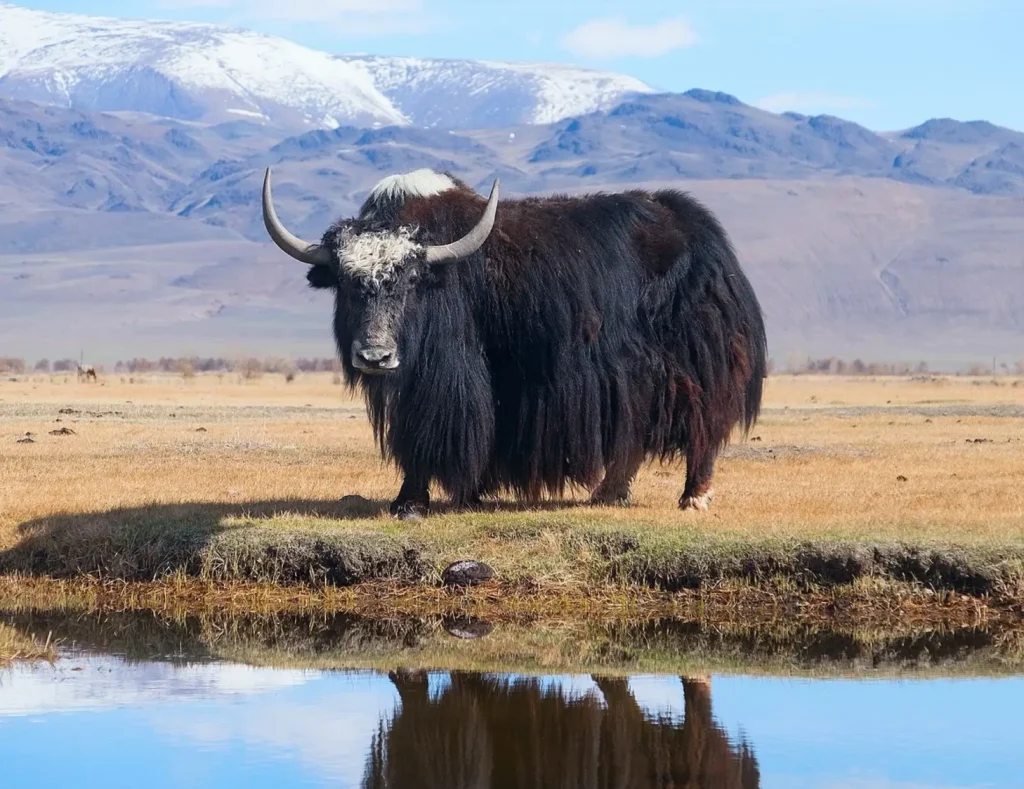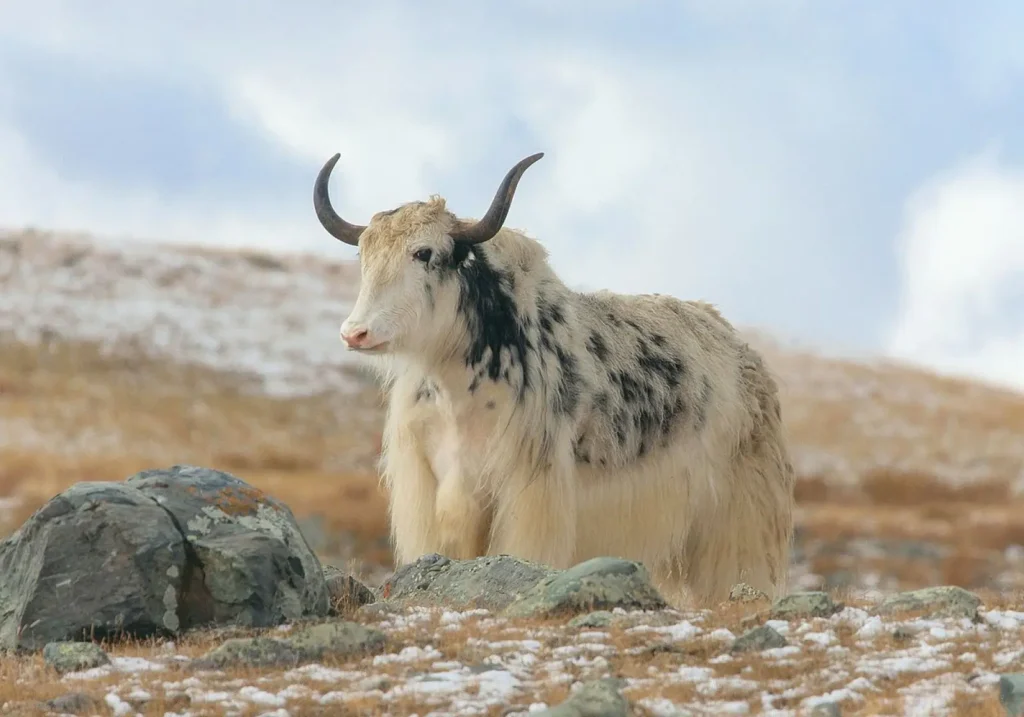As a home (Bos grunniens) is a domesticated descendant of the wild yak, which has long been a faithful companion of humans in the harsh conditions of Tibet, Mongolia and the Himalayas. Its strength, endurance and ability to survive in extreme environments have made it indispensable for mountain peoples.

Classification
- Kingdom: Animals (Animalia)
- Type: Chordal (Chordata)
- Classification: Mammalia (Mammalia)
- Order: Parousia (Artiodactyla)
- Family: Bull (Bovidae)
- Family: Bulls (Bos)
- Type: As (Bos grunniens)
Appearance
📏 Sizes
- Height at the withers: 1,6-2 м
- Weight: males up to 1000 kg, females up to 350 kg
🎨 Description
- Massive body, short legs, pronounced hump on the back
- Thick, long hair that almost touches the ground
- Color - dark brown or black
- Large horns bent to the sides (especially in males)

Range and habitat
🌍 Area
- Tibet, Nepal, Bhutan, Mongolia, northern India, western China
🌿 Living environment
- High mountain meadows, pastures, valleys at an altitude of 3000-6000 m
- Areas with harsh climates, strong winds and snow
Behavior
🧭 Lifestyle
- Herd animals, live in groups of 10-30 individuals
- Calm, hardy, easy to tame
- In winter, they shovel snow with their hooves to find grass
🌞 Activity
- Active during the day, resting at night
- Easily cover long distances on mountain slopes
Life cycle
🍼 Reproduction
- Puberty: 3 years
- Pregnancy: 8-9 months
- One calf is born
- Females take good care of their young, feeding them with milk for up to 6 months
🌱 Life span
- 20-25 years in natural conditions
- On the farm - a little less, depending on the conditions

Significance and threats
📌 Meaning for a person
- Source of meat, milk, wool, leather
- Pack animal: carrying cargo in the mountains
- Used as a traction force
- Manure is dried and used as fuel
⚠️ Threats
- Mixing with other breeds reduces genetic purity
- Climate change reduces pasture areas
- Declining demand for traditional livestock farming in highland regions
Interesting facts
✔️ Withstands frost down to -40°C thanks to a double layer of wool
✔️ Its milk has a very high fat content - up to 7-9%
✔️ In Tibetan culture, yak is a sacred animal, a symbol of strength
✔️ A hybrid of yak and cow is called "dzo" (in Mongolia)
✔️ At an altitude of 5000 meters, it feels better than an ordinary cow - thanks to its large lungs and heart
Conclusion
As a domestic animal, it is a unique animal that has been supporting people's lives in the mountains for thousands of years. Its endurance, ability to adapt to the harshest conditions, and multifunctionality make it indispensable not only in the past but also in the present to preserve traditional economy.